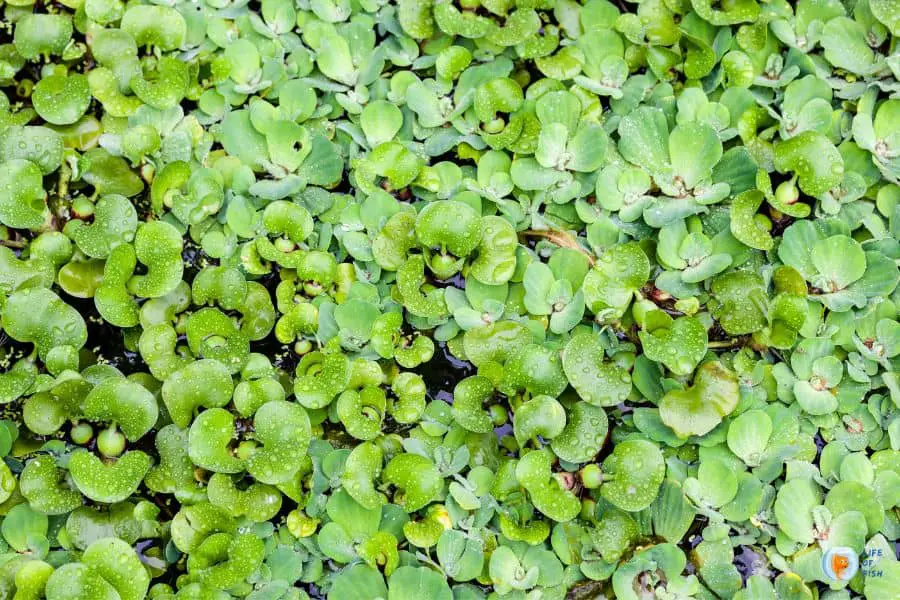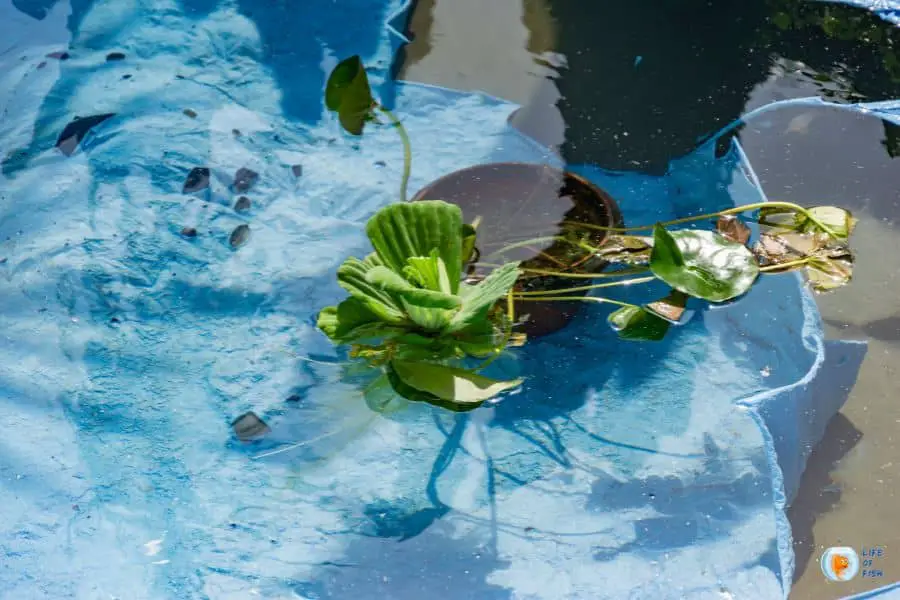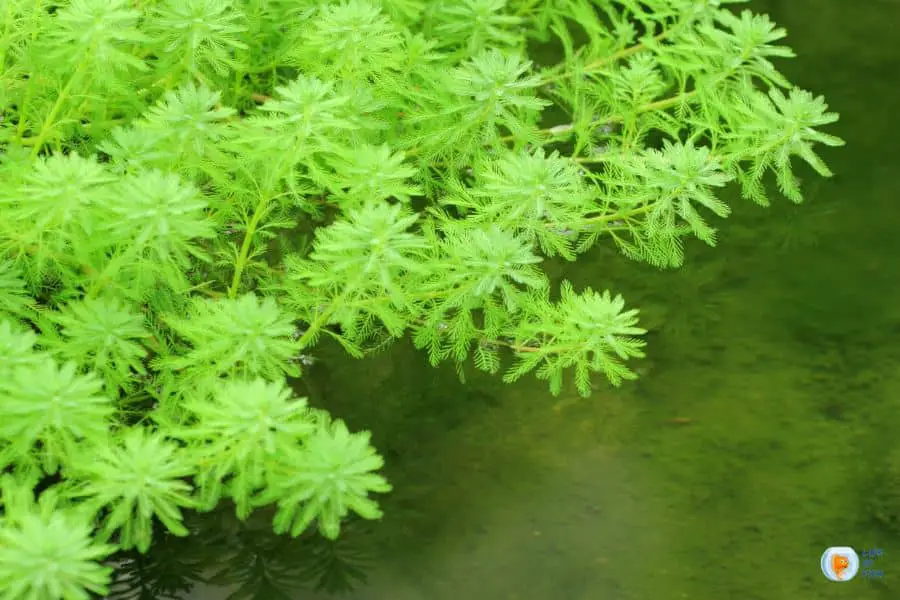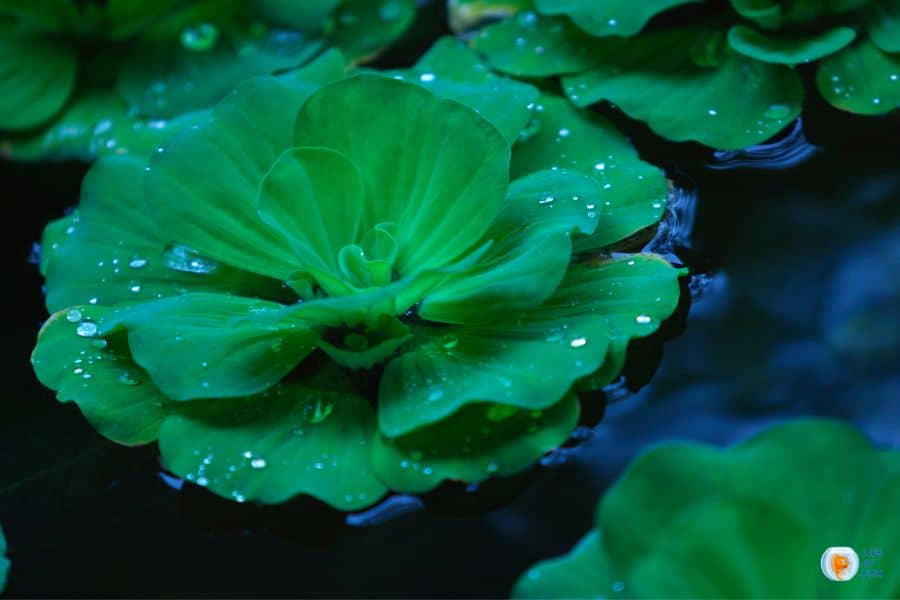Have you ever noticed your floating plants meandering around the aquarium? Does it seem like they never stay in one spot? If so, there is a simple solution to keeping them where you want them. In this article, we’ll explore how to keep floating plants in one place in the tank and ensure that they remain in place!

Whether you have just set up an aquarium or are looking for ways to spruce up an existing setup, adding floating aquatic plants can be a great way to add dimension and beauty. However, if these same floating plants are constantly on the move, it can create chaos in your otherwise serene underwater environment.
We’ll provide detailed instructions for anchoring down those pesky free floaters with items found in most households. Plus, we’ll share some tricks and tips for maintaining healthy growth and preventing unwanted algae buildup. So don’t let high maintenance stop you from enjoying beautiful aquatic greenery – follow along as we show you how simple it can be!
Challenge Of Keeping Floating Plants In Place
Jump To
Floating plants in an aquarium can be a real challenge to keep in place. Their tendency to drift around the tank makes it difficult for them to stay rooted and stable. This is why many aquarists struggle with how to keep their floating plants from drifting away.
One of the most effective ways to tackle this issue is by tying down the plant with fishing line or plastic thread, as long as they don’t sink too deep into the water. You could also use some other materials such as suction cups or even rocks if you want a more subtle approach that still keeps your aquatic vegetation secure.
No matter which solution you choose, anchoring your floating plants will help ensure that they are steady and remain rooted in one spot – allowing them to get all the sunlight and nutrients needed for healthy growth. Keeping these tips in mind will make sure your floaters gain stability without disrupting your underwater landscape.
Weighing Down Your Plants
Weighing down your plants is the key to keeping them in place and preventing them from drifting around the aquarium. You can do this by using rocks, driftwood, or other heavy objects to weigh them down. It’s important that you use items that are non-toxic, as some rocks may contain chemicals which could harm your fish or aquatic life.
Anchoring your floating plants with fishing line or thread also works well for heavier varieties such as water lettuce or duckweed. This method involves attaching one end of a fishing line to an object at the bottom of the tank and then tying it tightly around the base of the plant, so it won’t move around when disturbed by currents.
Using sealant on lightweight plants like frogbit will create a buoyancy control system, allowing you to adjust how much they float in the water column. Simply attach weights along their stems before submerging them into the water. The weightier they are, the less likely they’ll be pushed around by currents and waves. With any luck these strategies should keep your floating plants happily in place!

Plant Anchors
Plant anchors are an effective way to keep your floating plants from drifting around the aquarium. You can use anchors in several ways, and they come in a variety of materials, so you’re sure to find one that works for you.
One option is to attach weights or suction cups to the leaves of the plant. These will help hold it down and stop it from moving around too much. Another option is to use rocks or pebbles as anchors. Place them at the base of the plant roots, making sure they don’t cover up any part of the stem or foliage. This should give enough stability to prevent the plant from shifting about.
If using either method doesn’t work for you, special tools are available specifically designed as aquatic plant anchors. These range from plastic clips and clamps, which you simply affix to the stems, to weighted metal coils and frames that can be placed over larger plants with bigger root systems. Whichever anchor type you choose, make sure it’s secure enough not to detach easily but light enough so as not to damage your plants’ delicate structures. With these tips in mind, keeping your floating plants in place should no longer be a problem!
Creating A Barrier
Creating a barrier is an effective way to keep floating plants in place. It involves blocking the open space of the aquarium with objects that will act as walls, trapping the plants within certain areas. You can do This by using rocks, driftwood, or decorative pieces. It’s important to bear in mind that whatever material used should not have sharp edges, so it won’t hurt any aquatic creatures inside.
Another option is to use netting for creating a border around the perimeter of the tank and placing the floating plants within this area. The mesh can also help protect against livestock from consuming or damaging them. And there are many different decorative styles available to choose from; some even come with artificial greenery attached!
With these methods, your floating plants will remain secure no matter what type of water activity occurs in the aquarium – giving you peace of mind knowing they won’t move out of their designated spot anytime soon.

Floating Plant Rings
Floating plant rings are an effective way to keep your plants in the desired place. They are easy to use and can be found in most pet stores or online shops. These rings work by creating a barrier that encircles the floating plant, keeping them from drifting around the aquarium.
The main benefit of using these rings is they provide ample space for growth while also ensuring that your plants remain stationary. This makes it easier to monitor their progress as well as maintain balance within the tank. In addition, since they don’t require any special equipment or installation, you won’t need to worry about complicated setup procedures or additional costs.
These rings come in various sizes so you can easily find one that fits your aquarium and plants perfectly. You’ll want to choose one with enough room for all of your aquatic flora, but not too large where debris such as fish food could get trapped inside. With this in mind, selecting the right size will ensure that your floating plants stay put without compromising on their health or wellbeing.
Achieving An Aquarium That’s The Envy Of All Your Friends
Creating an aquarium with beautiful, lush floating plants can take your tank to the next level and make it the envy of all your friends. However, how do you keep those lovely greens from drifting around in the water? One solution is to get some floating plant rings – these are a simple yet effective way of keeping your aquatic vegetation stationary.
Floating plant rings don’t only help keep your aquascape looking great but also provide helpful benefits for your fish too. Having a set spot for their food means that any sinking pellets will stay in one place and not move away so easily; this allows them to feed properly without having to chase after their dinner! Plus, if you want to change up the layout of your tank occasionally, they’re easy enough to remove and rearrange as necessary.
So why not give floating plant rings a try today? Not only will they keep your plants right where you need them, but they’ll also ensure that every time you look at your aquarium, it’s nothing short of stunning. With just a few small changes here and there, you can guarantee that everyone who stops by will be impressed by its beauty.

Conclusion
Having a floating plant in your aquarium can be an attractive addition to any tank. But keeping them from drifting around the aquarium is another challenge altogether. With patience and a few options, you can keep these plants where they should be – right at the surface! Weighing down your plants with rocks or driftwood pieces, using anchors such as suction cups, creating barriers like dividers or walls, or simply buying floating rings are all great ways to keep those pesky floaters in place.
By taking a little extra time to set up this part of your tank correctly, you’ll have an aquarium that stands out for its beauty and organization. You’ll feel proud knowing that your hard work has paid off when friends and family come over for a visit—they’re sure to admire how well-kept everything looks! And if you ever decide to add more floating plants into the mix? You know exactly what steps to take so you don’t have to worry about it anymore.
Ultimately, following these simple tips will help ensure that your aquatic environment remains both aesthetically pleasing and stress-free! Whether you’re just starting out with fishkeeping or already have years of experience under your belt, keeping those floating plants in check is something every aquarist needs to do—and now you know how it’s done!
Read Next : Do Fish Like Heavily Planted Tanks? – An Expert’s Take
